
Colostrum… what? If you don’t know what this term means, or if you do but you don’t really know details, then you’re not alone! Especially if you don’t already have children, or aren’t planning to breast/chestfeed. But if you are planning on feeding baby this way and would like to know more, then we’ve got you! Today we’re talking all about colostrum: what it is, when you can start expressing it, how to collect it, everything you need to know.
What is colostrum?
Colostrum is the medical term for the first milk produced by your body during pregnancy (from around the 16th week of pregnancy). It is also called first milk, colostrum or even “liquid gold” due its colour and incredible properties. Tailored to your newborn’s needs, it is highly concentrated and rich in proteins and nutrients. In addition, the first milk is low in fat, easy for your baby to digest and very important for their development. Up to two thirds of the cells in colostrum are white blood cells, which protect against infections and help the baby to fight infections itself. These blood cells also form antibodies that can neutralise bacteria and viruses and thus protect the gastrointestinal tract. Colostrum is not white, but thick, yellowish-orange and very sticky due to its high protein content.
Why should I start hand expressing colostrum before birth?
Colostrum is the ideal food for every newborn after birth. It is perfectly tailored to baby’s needs. Due to its composition, it allows your baby’s digestive organs to get slowly and gently used to their respective tasks. It also stabilises newborn’s blood sugar levels in the first few days after birth. It helps with the elimination of the first bowel movement, called meconium, and subsequent movements, reducing the risk of newborn jaundice.
It is not always possible to give a newborn baby fresh colostrum from the breast/chest immediately after birth. This could be due to illness or latching/drinking difficulties. Hand expressing colostrum before birth (if the pregnancy is normal, from the 38th week of pregnancy at the earliest) can mean you’re prepared for any eventuality. Because your newborn’s stomach is as small as a hazelnut after birth, just a few drops of this highly concentrated milk are enough.
Who should try colostrum harvesting?
Colostrum harvesting (or collecting) before birth has benefits for all birthing parents and babies. However, there are some cases where it is even more important to have fresh colostrum available after birth.
If the birthing parent may have (this list is not exhaustive):
- Diabetes mellitus (type 1, type 2 or gestational diabetes)
- Pre-eclampsia
- A planned abdominal birth / caesarean section
- Anatomical abnormalities of the breast/chest
- Poor previous breast/chestfeeding experience
- Breast reduction surgery or top surgery
- A multiple birth (twins, triplets etc.)
- Increased body mass index (BMI)
If the baby might have (this list is not exhaustive):
- A cleft lip and palate
- Down syndrome or other syndromes
- Heart defects
- Developmental deficiencies
- Difficulty feeding
- Children estimated to be much larger than average (macrosomia)
What are the other benefits of colostrum harvesting?
In addition to having colostrum milk in reserve in case baby needs help with feeding, and the health benefits, massaging your breasts/chest and expressing colostrum before birth also has the advantage that you get to know your body better. During your feeding journey, you will probably find yourself massaging your breasts/chest more often, to extract milk or express excess milk. And that’s easier said than done until you know what you’re doing. You first have to learn how your body works which can take some practice. During your pregnancy, you will find more peace and time for this than after the birth.
When can I start collecting colostrum?
- For uncomplicated pregnancies – from the 38th week of pregnancy
- In the case of an imminent premature birth, multiple births, or a planned caesarean section – only at the start of labour or a few days before the caesarean section (please do this only in consultation with a midwife, doctor, breastfeeding consultant or children’s clinic!)
- If it is not possible for you to express colostrum during pregnancy, you can try doing it in the delivery room with the help of the midwife (if you are able to do so)
Colostrum harvesting: What do I need?
To express colostrum before birth, you first need to stimulate the breast/chest with the help of a breast massage. Please remember that it really does take a little practice. So if nothing happens the first few times – or in general – this is not indicative of your later breastfeeding success.
If you want to collect colostrum, you will need special colostrum containers or collectors that can collect milk directly. Colostrum harvesting syringes are a popular choice. These are disposable syringes that are suitable for freezing. You will also need a clean surface to place the utensils on. Hygiene is vitally important here. Wash your hands thoroughly with soap beforehand and use disposable towels or a clean towel to dry them.
Important: You should perform the breast/chest massage yourself, as only you can determine whether the touch is pleasant for you. And it should always be.
How to hand express colostrum: Massaging the breast/chest
Make yourself comfortable and try to relax before you start massaging. Warmth helps. So maybe try after a warm shower or with a warm pad.
First, gently touch the breast/chest with your fingertips and stroke gently from the base of the breast/chest towards the nipple. Then move on to a gentle massage. To do this, place one hand in a C-shape under the breast/chest. Form a C with the second hand and place it on top of the same breast/chest. Now start to gently move both hands back and forth in opposite directions (rolling movement). Repeat this movement vertically.
Then support your breast/chest with one hand and the other hand massage with three or four fingers in small circular movements. This first massage should last a total of two minutes and prepares your breast/chest for the subsequent milk production.
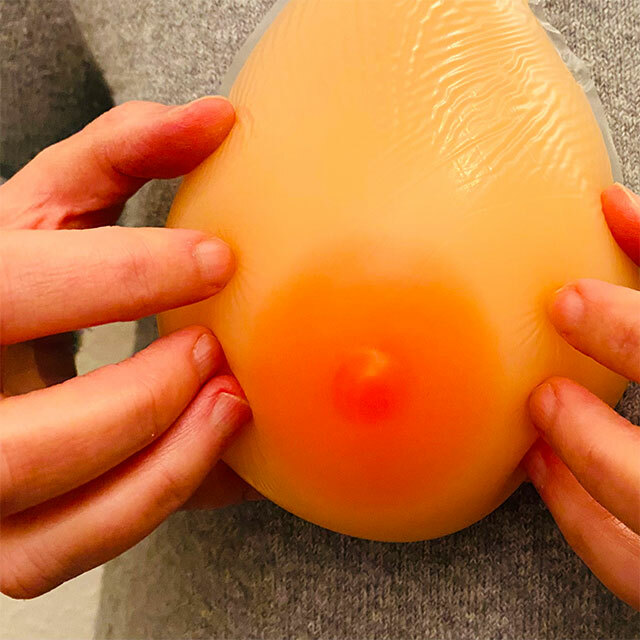
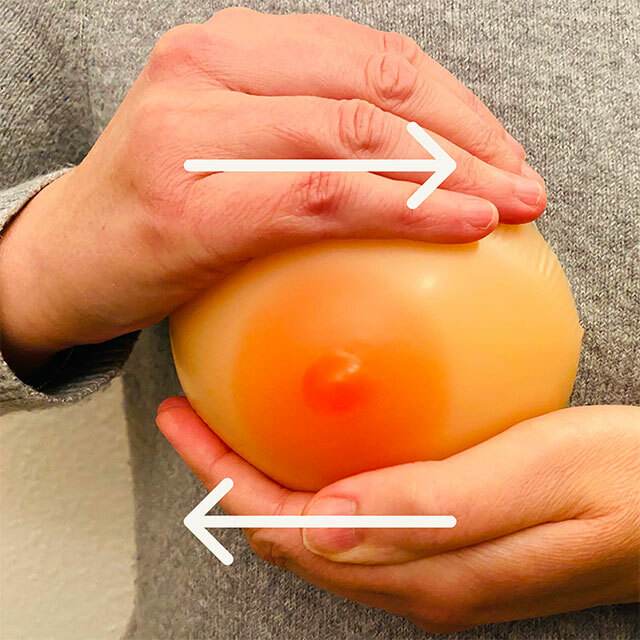

How to hand express colostrum: Collecting the colostrum
To be able to collect a supply of colostrum, you should regularly express the breast/chest. Please discuss the exact procedure with your midwife or lactation consultant. It is important that you do not slide your hands over the skin and do not start too close to the nipple. This can become painful over time.
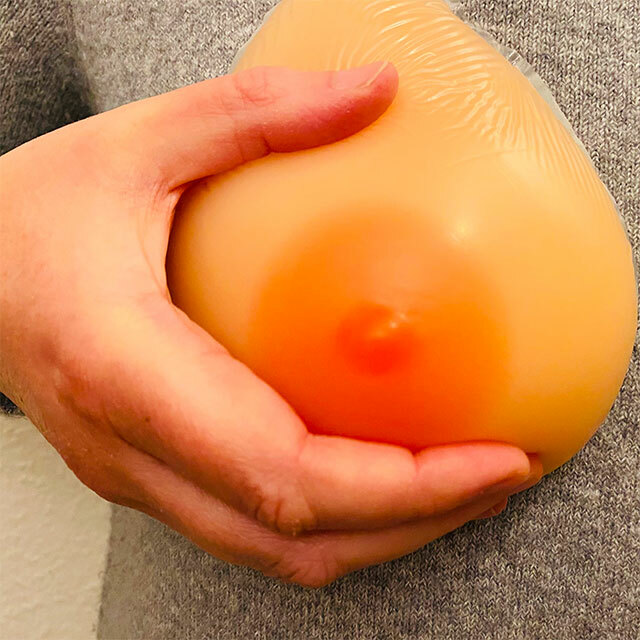 | Place your hand under the breast/chest again in a C-shape and position your thumb and index finger 2-3 centimetres apart next to the nipple or areola. This is the resting position. |
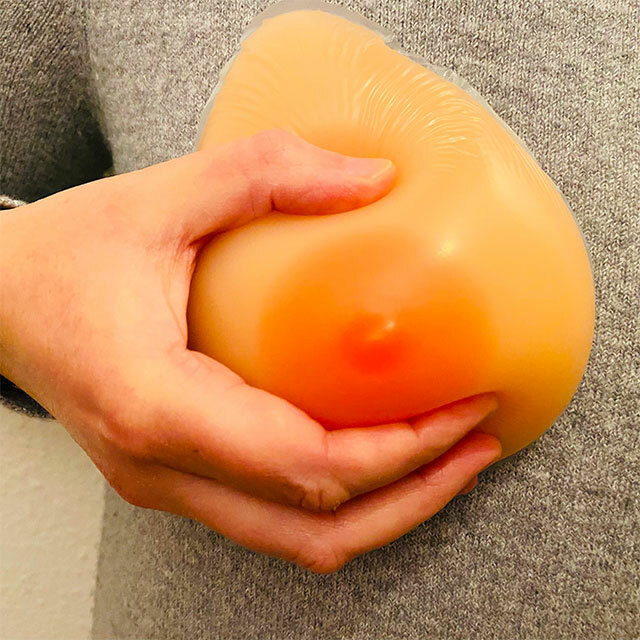 | Now push your index finger and thumb back slightly (away from the nipple) and press gently into the breast/chest (towards the ribcage and ribs). |
 | Now press the fingers together lightly (without squeezing the nipple) and roll forward again to the original position. |
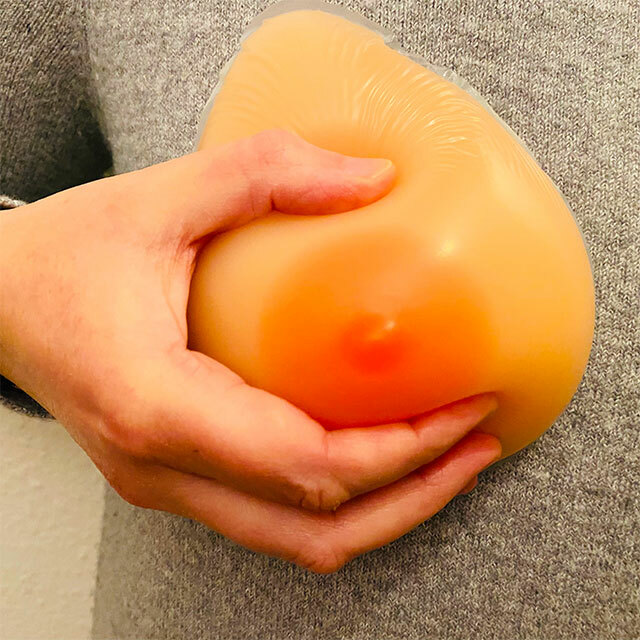 | Repeat this movement of squeezing, rolling and releasing until the first drops of milk can be seen. If no milk comes out, it can help to change the position of the fingers slightly, e.g. further away from the nipple. The more rhythmic the movement, the better the milk will flow. |
 | When the first drops of milk can be seen on the nipple, draw them up with one of your colostrum harvesting syringes or collect them in a colostrum container. Change the position of your hands around the areola so that you massage all the milk ducts in your breast. |
Close the syringe immediately with the cap.
If less and less milk comes out of the nipple, change the position of your fingers around the areola (e.g. above and below) to massage all the milk ducts of the breast.
Repeat all the steps (including massage) with other second side of your body.
You can also watch the entire stroking movements again
in this YouTube video by Kathryn Stagg IBCLC OR in this video by Unicef (market specific – these are UK links)
One more important note: If you feel your tummy tightening painfully or are in any discomfort at any point, stop immediately.
How to store colostrum
After each expression session, you should label the syringes/containers with your name, the date and time and store them immediately at -18°C in the freezer, or feed them directly (if the child has already been born).
See this guide for more information on how to store colostrum or milk:
Suggested versions for EN blog: https://llli.org/breastfeeding-info/storingmilk/#:~:text=General%20storage%20tips%3A&text=Refrigerated%20milk%20has%20less%20fat,it%20to%20previously%20expressed%20milk OR
How do I transport the colostrum to the hospital?
If you want to take your colostrum with you to the hospital for the birth of your baby, you can place a few of the syringes/containers in food-safe resealable plastic bags. Please also label these thoroughly with your name and the date.
Place the bags or containers in a cooler bag between various cold packs and inform your midwife at the hospital that you have brought colostrum with you.
Please do not bring all the syringes with you immediately if you have a large supply of colostrum. If you need more at the hospital, you can always express more.
How do I feed my baby colostrum?
Some newborns find it difficult to suckle to start with. Others have problems maintaining their blood sugar levels. In these situations, it makes sense to feed your baby colostrum. If you are in hospital, your midwife or other healthcare professional will take the colostrum out of the freezer, defrost it (at room temperature or in the fridge) and give it to you. It can then be warmed up under warm running water. Please do not use a microwave.
Colostrum harvesting: will you try it?
Hand expressing colostrum and colostrum harvesting has many advantages for both parent and child. The process helps you get to know your body better, and the “liquid gold” itself is a real immune and energy booster for your baby. Please remember to always seek advice from your midwife or feeding consultant beforehand.
Sources:
https://www.stillen-institut.com/de/gewinnen-und-aufbewahren-von-muttermilch.html
https://www.medela.de/stillen/deine-stillzeit/kolostrum
https://lansinoh.de/blogs/schwangerschaft/kolostrum-wunder-der-natur



